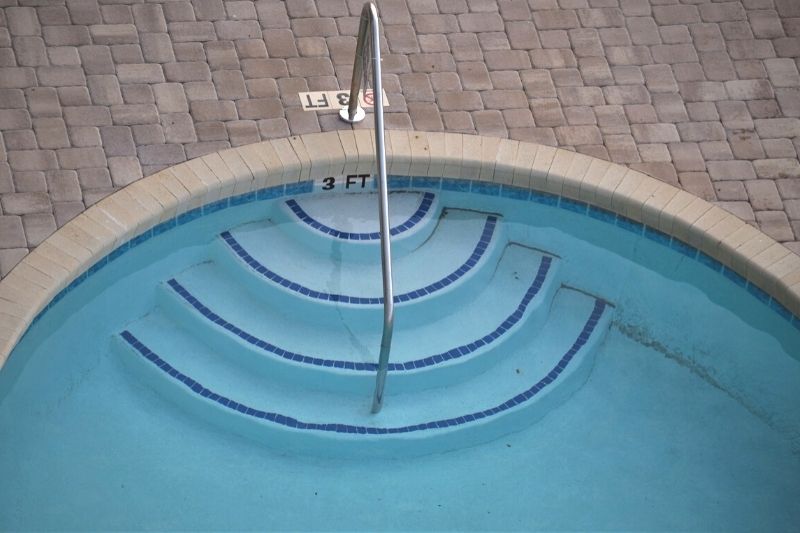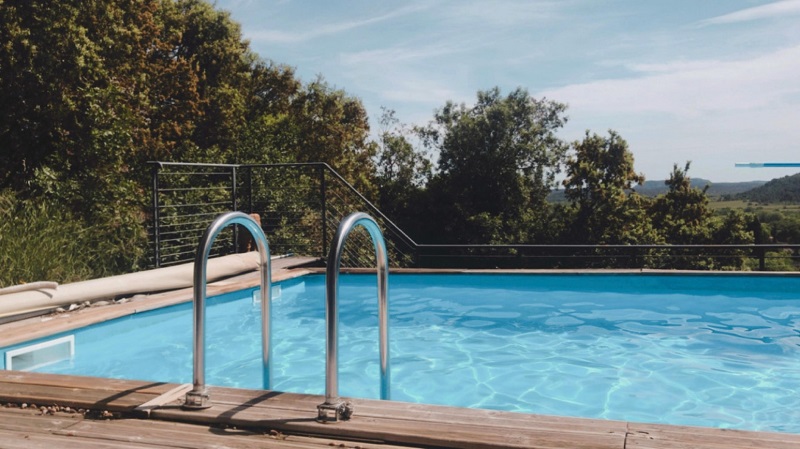Stain Removal Products
Stains can be both unsightly and damaging to your pool (or spa). The most common type of staining is caused by metals and organic contaminants and can manifest itself in various different ways. It is key to understand the different types of stains that are encountered most often in the pool and spa industry before discussing pool stain removers.
Most common Sources of Pool Stains
- Organic stains – Caused by living things like plant matter (leaves, acorns, flowers et cetera), algae, worms, and anything else that once lived and happens to end up in your pool (or spa). Organic stains are prevented by proper cleaning and not allowing the contaminants from sitting in your pool (or spa) for any length of time, while also maintaining proper filtration and sanitizer levels. Organic stains are commonly resolved by shocking and brushing the stains directly.
- Inorganic stains – Caused by metals such as copper and iron and can be more difficult to prevent and treat. Copper can be introduced by mineral systems, algaecides, or old plumbing to name a few and iron can be introduced by well-water and lawn fertilizer over broadcast. Metal stains are typically prevented by either sequestering the metals or removing them from the water. If stains already exist then they can be treated with stain removal products in conjunction with stain prevention products.
- Hydration Stains – We don’t discuss hydration stains in detail here, but they can be present in plaster pools as it results from water being trapped behind the plaster. If you test your stain and it isn’t organic or metal, then you should contact your pool builder or a professional to discuss options as this type of staining is more difficult to address and requires a professional service.


What Causes Staining and How Do You Treat It?
Before treating your stain, you should first determine whether it is organic or inorganic. There are test kits available that make this very easy to do, or you can do some quick simple tests to identify the most common stains.
Organic staining
Organic staining is the easiest to understand as it is simply due to allowing organic contaminants to sit in one place for too long. Consider what happens when leaves or acorns sit on concrete drives or patios. You got it, staining occurs.
The same concept applies to your pool (or spa) and that’s why it’s so important to vacuum and sweep regularly. One way to test/treat organic stains is to use a trichlor puck and place it on the stain for a short period of time (~2 minutes) to see if the stain starts to lift.
You may need to test a few times or leave the puck longer (~15 minutes for plaster) as the time recommended here is short to prevent damage to vinyl liners. If the stain lightens then that means you have an organic stain and you can treat with organic stain remover products.
In order to remove organic stains, you should shock your pool (or spa) and brush daily with a stiff brush until the stain is removed. This may take time and patience, and some stains like tannin stains could take even longer. Keeping your chlorine level on the higher end, water balanced and brushing more often will help stains fade over time.
Inorganic staining
Inorganic staining is caused by more complex reactions between inorganic elements and pool chemicals. The good thing about that is that you can typically reverse chemical reactions depending on their specific nature.
Metal stains will typically present in the presence of high pH or high chlorine when there is a presence of metal in the water (either from fill water or from other sources such as lawn fertilizers or copper based algaecides or copper piping).
You will need to use different methods depending on the type of metal stain you are removing. Here are two videos that explain how to remove iron stains by spot treatment or by treating for a larger scale case.
The most common way is to use vitamin c for small stains or ascorbic acid for larger cases. In addition, there are stain multi-stain removal products that contain combinations of products that will treat various flavors of stains in the event you have more than one type present.
It is important to know that there are three different phases to removing and preventing metal stains from reoccurring:
- Remove the stain from the surface.
- Sequester the metal so that it can’t redeposit.
- Remove the metal completely from the water.
What Forms Do Stain Removal Products Come In And How Do I Use them?


Pool Stain remover products come in both liquid and powder form depending on the method of treatment.
In addition, you will need cleaning equipment such as a stiff brush and potentially a chlorine puck tool that allows you to reach deep areas of a pool or walls. The brutal truth is that it can be difficult sometimes to remove stains and as mentioned the best approach is to prevent staining before it happens.
As with all pool (or spa) chemicals, and in particular pool stain remover products, it’s important to follow the manufacturer’s directions for their specific product as you can damage your pool (or spa) surface if applied incorrectly and you need to alter some of your typical water chemistry levels for the products to be effective.
Safety Information About Scale Removal Products
You should always read and follow all safety precautions on the product labels. Keeping your pool (or spa) safe means keeping yourself and others around you safe while maintaining your equipment and your water chemistry balanced.
Some common recommendations include:
- Wearing protective gear such as gloves and eye protection.
- Store chemicals in ventilated areas and separate from one another to avoid chemical reactions from leaks.
- Do not mix chemicals.
See this informative video for some more great tips on pool chemical safety.

